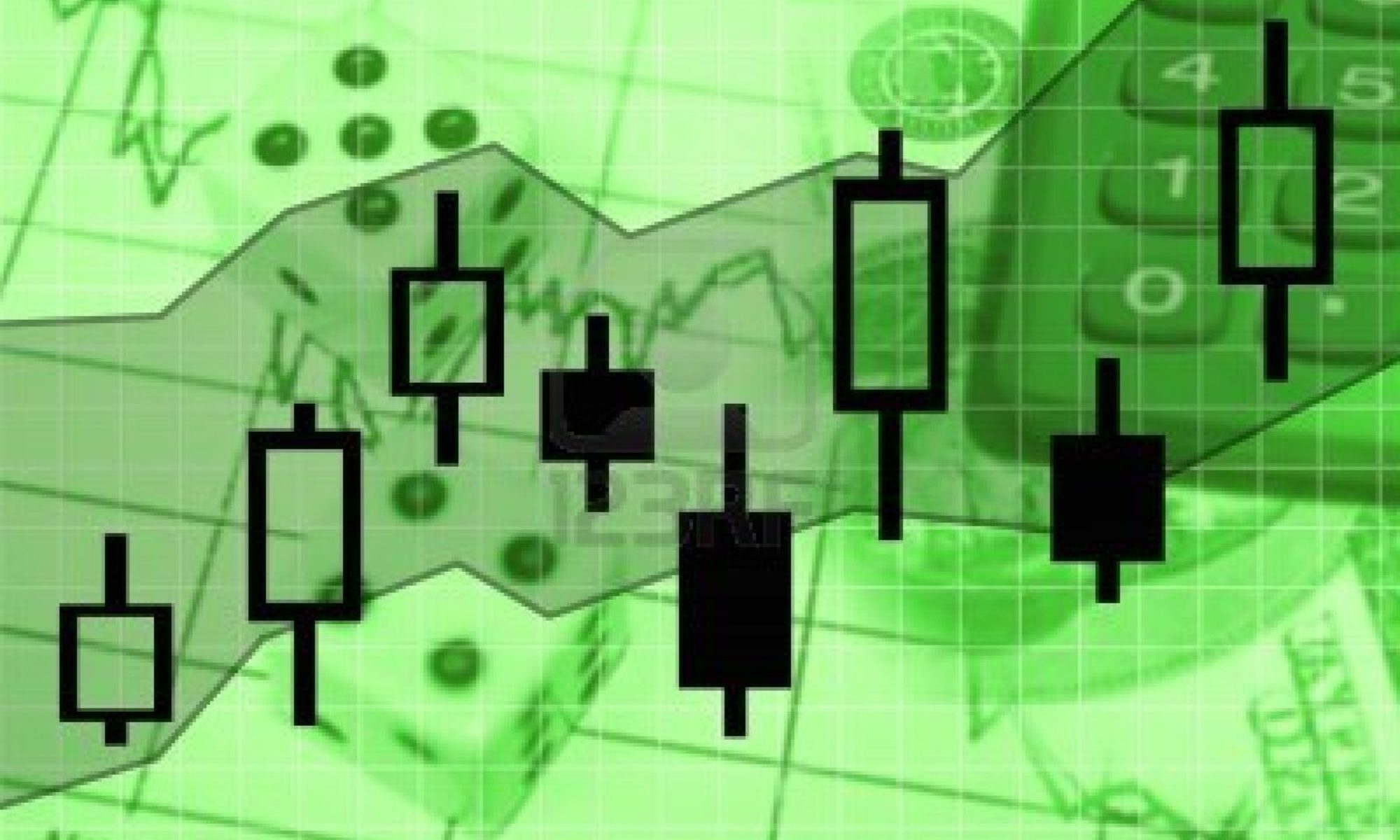April 3, 2014 is the first day of Google shares trading in two classes. One class, Google – A class, will trade under the ticker GOOGL. These shares will have voting rights just like most stock that you might purchase. Incidentally, these shares are the current stock that investors hold. So if you own Google stock you will retain your right to vote in their shareholder meetings. You will be switched to the new ticker and given an equal amount of shares in the new (but old ticker) GOOG class C shares. These C class shares do not have any voting rights.
Charts Courtesy of Yahoo Finance
The action results in a two for one stock split except that the new shares issued will not have the ability to vote in shareholder meetings. The motivation behind the split is two-fold. Typically, corporations feel that when their stock price gets too high retail investors may shy away with sticker shock. In reality it doesn’t matter how high a stock price is; one share of a $1,000 stock costs the same as ten shares of a $100 stock. If both stocks rise by 5% you still have the same amount of profit on your $1,000 investment. Google very quickly in its history became a higher priced stock and the corporation never felt the need to split the stock. The second reason is the motivating one. The top executives at Google want to maintain control over the company.
Maintaining control of the company is important to the founders. They would like to raise more capital (money) for the company by issuing more stock. They can use newly issued stock to buy other companies. What they don’t want to do is lose control over Google by raising more money. Issuing more stock could lead to the distractions that happen when large institutional shareholders start making demands on what the company should do next. Ten years in the future the new issuance of Google stock could lead to the opportunity for someone or some group to do exactly that. Now when Google issues new shares it will issue the non-voting C class shares.
So are you disappointed that you may have less of a say in Google’s corporate actions? You shouldn’t be. Currently the top executives own 61% of the outstanding equity voting rights, so you never really had a chance on trying to force Google to pay a dividend or buy back shares like Carl Icahn tried to force Apple to do. This move by Google is meant to protect themselves from this type of distraction in the future and not so much as right now. As a shareholder of the A class voting shares you still have the same number of votes as you did before. This split effectively locks in the 61% for the top executives. If they don’t sell a single share of their A shares then they will maintain the 61% voting control over Google.
Now what theoretically should happen is that the price of a single share of Google should be cut in half once the new shares start trading on April 3, 2014. You should be asking yourself whether or not there should be a difference in price in voting shares and non-voting shares. Certainly common sense dictates that having some right versus no right should be worth more. Additionally, the game of splitting shares into two classes has been played before. Companies such as News Corp, CBS, Comcast, and Discovery Communications have played this game before. At the end of this article there are charts where the voting class shares are presented next to the non-voting class. You will notice that the differences (referred to as the spreads) are not very significant.
Because of a lawsuit by some investors in Google, there is a mechanism to compensate share holders if the spread is too wide. Essentially, the average price weighted by volume over a year of the two classes will be compared. If the new non-voting C class shares have a lower volume weighted average price than the voting A class then shareholders as of a certain date will be compensated a percentage of the difference. The percentages of compensation are as follows: 20% of the difference if the price of class A is higher than class C by 1-2%; 40% of the difference if the difference is between 2-3%; 60% of the difference if the difference is between 3-4%; 80% of the difference if the difference is between 4-5%. If the difference is exactly 5% investors receive 100% of the difference. No compensation is received if the difference is greater than 5%. Using last year as a guide, the average differences of the before mentioned corporation’s voting and non-voting stock was 2.6%. The volume weighted average price of Google was USD$977.38. These are how the payouts look:
| Google VWAP | $977.38 | ||||
| Potential C Class Discount | 1%-2% | 2%-3% | 3%-4% | 4%-5% | 5% |
| Share Price Difference | $9.77-$19.55 | $19.55-$29.32 | $29.32-$39.10 | $39.10-$48.87 | $48.87 |
| Compensation Percent | 20% | 40% | 60% | 80% | 100% |
| Compensation Payment | $1.95-$3.91 | $7.82-$11.73 | $17.59-$23.46 | $31.28-$39.10 | $48.87 |
Assuming the average discount of 2.6%, the resulting payment to shareholders could be USD$10.30. For this to take place the VWAP (volume weighted average price) of the A shares would have to be USD$977.38 and the VWAP of the C shares would have to be USD$951.61.
[amazon asin=B004KPM1GM&text=”Game Theory”] comes to mind because of this method of giving a one time payment to shareholders. Since the formula is known and is constant you can watch the action unfold in real time. The participants in the game will keep competing until an equilibrium is met and no one player would alter their own decision. If you are interested in this way of thinking then I would recommend looking into the concept of the [amazon asin=B004QWZ5SA&text=”Nash Equilibrium”]. Essentially the Nash Equilibrium is met when no player can increase their gain by altering their decision. In this case you, the investment community, are the players. Your choices or decisions are expressed as the price you are willing to pay for Google shares.
Let us look at our example from the table above. If everything is steady and you are approaching the determination date of the payment you might have the A shares with a VWAP of USD$977.38 and the C shares with a VWAP of USD$951.61. So at this point C class shareholders are expecting the payout of USD$10.30 because of the lawsuit settlement. So the C class shares are really worth USD$951.61 + USD$10.31 = USD$961.92. So you as a game player decide you should buy Google Class C shares at a price of USD$960.00. Even though you are paying more than the original USD$951.61 you know you will get USD$10.30 so you still could get a profit of USD$1.92 ($961.92-$960.00). Well you are proud of yourself and you boast at a cocktail party of what you intend to do. Now someone who doesn’t own any Google shares thinks that they can pay USD$960.01, just one cent more than you did. They do this because, while they are not making as much profit as you, they are making more than zero. Their profit would be USD$1.91. Now everyone else jumps in and starts driving the price up because now people are buying at USD$960.01. So they will pay up until the profit opportunity reaches practically zero. Then the game is at a Nash Equilibrium.
The above explanation is a simplified version of reality since the VWAP is somewhat trickier to nail down and the game starts to take place after the shares start trading and takes place for a whole year. Details of the settlement also need to be taken into consideration. In that time other factors will affect the price and volume of the stock. However, this is a pretty decent model of a major force that will effect the spread between the class A and class C shares (GOOGL and GOOG). The way that the minds at Google work, it is highly likely they used this type of analysis for the settlement agreement. Secondly, the fact that management currently holds the majority vote is to be considered. Therefore the premium on becoming a controlling voter in Google shareholder meetings is pretty much zero. This move will only cement the controlling stake that management has. Also remember that Google itself is a player in this game. It makes financial sense for them to buy their stock back to try to save on the compensation payment. They would buy back until the cost of the buyback would equal the savings in the compensation payment. Therefore Google, being a game player, would help to accelerate the Nash Equilibrium condition. All of these factors might help to keep the spread steady and would tend to push it towards zero though it may never reach there.
Now what if you are an option trader in Google? You should read the following article here. What will happen to existing options is that the deliverable, instead of 100 shares of GOOG (or 10 shares for mini contracts) will be 100 shares of GOOGL and 100 shares of GOOG for each contract (10 shares of each for mini contracts). Therefore option holders will have to do the arithmetic on whether or not to exercise options. This may make those options less liquid or attractive. Believe it or not computers and traders may not feel the extra steps or modifications of computer programs to account for the two share class prices is worth the effort. You can expect deep out of the money or deep in the money options to retain most of their intrinsic value. The extrinsic or time value may decrease somewhat. Especially compared to newly released options that are specifically written against A and C class shares independently. Perhaps there is an opportunity in trading one set of options and hedging with the others. As this could be a technically and capital intensive effort that should be left to experienced traders with good option pricing capabilities.
After this lengthy discussion, I hope you have a better understanding of what can happen post split for Google. More importantly is the lesson in Game Theory analysis and how to apply it to events surrounding trades. It is important as a trader to think of how the other participants (players) are involved. Think of how other players would benefit from different outcomes. What are their financial incentives? This will help you to align your strategy within reason and help keep things in perspective.
Good luck and trade rationally.
Charts Courtesy of Yahoo Finance
Charts Courtesy of Yahoo Finance
Charts Courtesy of Yahoo Finance
Charts Courtesy of Yahoo Finance
Charts Courtesy of Yahoo Finance

